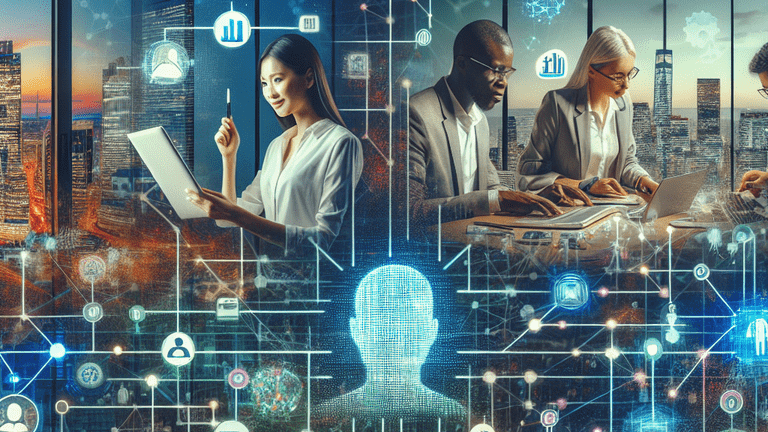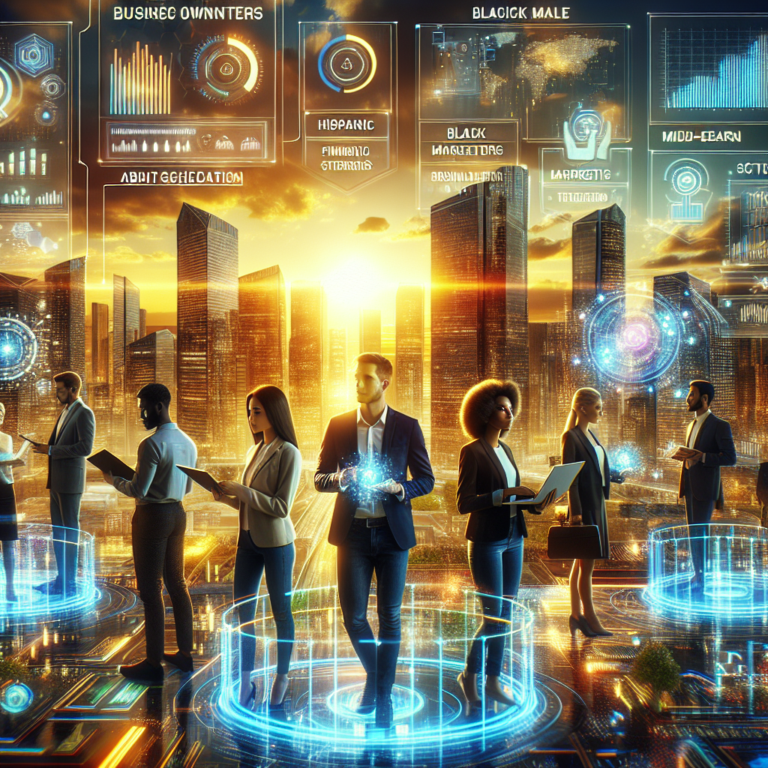Table of Contents
ToggleDifferent Ways in Artificial Intelligence is Transforming Your Day-to-Day Life.

Artificial Intelligence (AI) is no longer confined to the realms of science fiction. Today, AI is woven into the fabric of our daily routines, improving everything from how we interact with technology to how we manage our health and finances. While you may not always notice it, AI plays a significant role in simplifying and enhancing many aspects of life. In this blog, we’ll explore 20 ways AI is used in everyday life.
1. Virtual Assistants (Siri, Alexa, Google Assistant)
Most people interact with AI daily through virtual assistants like Siri, Alexa, or Google Assistant. These voice-activated AI systems can help you with a range of tasks: setting reminders, checking the weather, sending messages, and even controlling smart devices in your home. AI plays a crucial role in virtual assistants like Siri, Alexa, and Google Assistant by enabling them to understand and process natural language. These AI systems use machine learning algorithms with natural language processing to interpret voice commands, respond accurately, and improve over time based on user interactions. Through voice recognition, they can perform a variety of tasks, such as setting reminders, controlling smart home devices, providing weather updates, or answering general knowledge questions. By constantly learning from user preferences and behaviors, AI enhances the accuracy and efficiency of virtual assistants, making them more intuitive and responsive to individual needs.

2. AI Powered Camera in Smartphone
AI in smartphone cameras improves photo quality by automatically adjusting settings like exposure, focus, and white balance based on the scene. Using machine learning, it recognizes objects, environments, and faces to optimize the shot—whether you’re taking portraits, landscapes, or low-light images. Features like portrait mode, night mode, and real-time object recognition are powered by AI, enabling smartphones to capture professional-grade photos without the need for manual adjustments. Some smartphones even feature AI-driven “scene detection” to identify objects and scenes (like food, landscapes, or people) and optimize settings accordingly.
3. Smart Home Devices
AI is at the heart of many smart home devices, transforming how we interact with our living spaces. Smart thermostats like Nest use AI to learn your heating and cooling preferences over time, adjusting temperatures automatically based on your schedule and habits, which saves energy and ensures comfort. AI-powered voice assistants, such as Alexa, Google Assistant, and Siri, enable hands-free control of devices, allowing you to manage everything from lights and thermostats to security systems and entertainment.
Smart security cameras and doorbells use AI to detect movement, recognize faces, and differentiate between humans, animals, or objects, enhancing security while minimizing false alerts. AI also powers smart lighting systems that adapt to your activity or the time of day, creating the ideal ambiance. Additionally, AI can automate routine tasks, such as setting up reminders, ordering groceries, or controlling appliances, making your home more efficient, personalized, and secure. Ultimately, AI is making everyday living simpler, more connected, and smarter.

4. Personalized Recommendations (Netflix, YouTube, Spotify)
AI drives personalized recommendations on platforms like Netflix, YouTube, and Spotify by analyzing user behavior, preferences, and interactions. These algorithms track what you watch, listen to, and search for, offering tailored suggestions that align with your tastes. As you engage with content, AI refines its recommendations, helping you discover new movies, shows, or music suited to your interests.
5. Navigation and Traffic Management
AI powers navigation apps like Google Maps and Waze, which analyze traffic patterns, road conditions, and real-time data to suggest the fastest routes. AI can also reroute you in case of accidents or traffic jams, helping you avoid delays.
6. Self-Driving Cars
Though not widespread yet, autonomous vehicles (e.g., Tesla, Waymo, BYD) are changing how we think about transportation. These vehicles use AI to process data from sensors, cameras, and GPS to navigate, avoid obstacles, and make real-time driving decisions.
Self-driving cars rely heavily on AI to navigate roads and make real-time decisions. AI algorithms process data from a network of sensors, cameras, LiDAR, and radar to detect and interpret the surrounding environment, including pedestrians, other vehicles, traffic signs, and obstacles. Using machine learning, these systems continuously improve their ability to predict traffic patterns, avoid accidents, and optimize routes. AI also enables advanced features like adaptive cruise control, automatic lane-keeping, and emergency braking. Through continuous data analysis, self-driving cars learn from millions of driving scenarios, making autonomous vehicles safer, more efficient, and capable of handling complex road situations.

7. E-Commerce Recommendations
When you shop online, AI algorithms track your browsing and purchase history to suggest products you may like. Amazon’s recommendation engine is a prime example, helping you discover new items based on your preferences.
8. AI Chatbots in Customer Service
AI-powered chatbots are revolutionizing customer service. Many websites and apps use AI to provide instant responses to customer queries, offering help with everything from product information to troubleshooting common issues.
9. AI in Healthcare Diagnostics
AI is improving healthcare by assisting with diagnostics. AI algorithms can analyze medical images (X-rays, MRIs, etc.) and help detect early signs of conditions like cancer or heart disease. AI is also used in predictive analytics to identify health risks based on patient data.
AI is revolutionizing healthcare diagnostics by improving accuracy and speed in detecting medical conditions. Machine learning algorithms analyze medical images—such as X-rays, MRIs, and CT scans—helping doctors identify early signs of diseases like cancer, heart disease, and neurological disorders. AI can also process large datasets, including patient history and genetic information, to predict disease risk and personalize treatment plans. Additionally, AI-powered tools assist in diagnosing conditions like diabetes, detecting abnormal vital signs, and monitoring chronic illnesses. By reducing human error and enabling faster diagnoses, AI enhances patient outcomes and supports medical professionals in providing better care.
10. Smart Wearables (Apple Watch, Fitbit)
Devices like the Apple Watch and Fitbit use AI to monitor your health, track activity levels, and even detect irregularities in heart rate. These wearables use machine learning to provide personalized fitness insights and health recommendations.
11. Spam Filters and Email Sorting
AI is widely used in email applications (Gmail, Outlook, etc.) to filter out spam and categorize incoming emails. The more you interact with your email, the smarter the AI becomes at recognizing legitimate messages and placing them in the correct folders.
AI-powered spam filters and email sorting systems help organize your inbox by automatically categorizing incoming messages. Machine learning algorithms analyze patterns in your emails, detecting potential spam, phishing attempts, or promotional content, and filtering them out. AI also sorts emails into categories like Primary, Social, or Updates, improving email management. Over time, the system learns from your interactions, enhancing its ability to prioritize important messages and reduce clutter.
12. Online Fraud Detection
AI is actively used by banks and financial institutions to monitor transactions for suspicious activity. Machine learning algorithms can detect anomalies in spending patterns, helping to prevent credit card fraud and identity theft before it happens.
AI plays a key role in online fraud detection by analyzing transaction patterns in real-time to identify suspicious activities. Machine learning algorithms detect anomalies, such as unusual spending behaviour, login locations, or rapid transactions, which could signal fraud. By continuously learning from vast datasets, AI improves its ability to distinguish between legitimate transactions and fraudulent attempts. It also helps with identity verification, detecting counterfeit profiles or login credentials. With AI, financial institutions can respond to potential fraud quickly, preventing financial losses and protecting users’ sensitive data.
13. Robo-Advisors in Finance
AI-powered robot-advisors are transforming the finance industry by offering automated investment advice based on algorithms and data analysis. These platforms assess an individual’s financial goals, risk tolerance, and investment preferences to create personalized portfolios. Robo-advisors provide low-cost, accessible investment management, making it easier for individuals to invest without requiring expert knowledge. They continuously monitor and adjust portfolios, ensuring optimal performance in response to market changes and personal financial goals.
14. AI in Education: Personalized Learning
In classrooms and online learning platforms, AI is being used to tailor educational experiences to individual students. Adaptive learning platforms analyze student performance in real time, providing personalized recommendations to help students learn at their own pace.
AI is transforming education by enabling personalized learning experiences. Adaptive learning platforms powered by AI analyze students’ strengths, weaknesses, and learning speeds to tailor lessons and assignments accordingly. This allows each student to progress at their own pace, receiving targeted support in areas where they struggle. AI also provides real-time feedback, helping educators track individual progress and adjust teaching strategies. Additionally, AI-powered tools can create customized study plans, recommend resources, and even offer interactive exercises. By personalizing education, AI enhances engagement, improves outcomes, and ensures that every student receives the support they need to succeed.

15. Voice-to-Text and Transcription Services
AI-driven voice recognition software, like Dragon NaturallySpeaking and Google’s speech-to-text feature, converts spoken language into written text. This is especially useful for people who need to transcribe meetings, lectures, or personal notes hands-free.
16. AI Image Generators
AI image generators use machine learning algorithms to create original images based on text descriptions or pre-existing visuals. By analyzing vast datasets, these tools can generate realistic or artistic images, from portraits to landscapes. Platforms like DALL·E and Midjourney enable users to input prompts, producing unique visuals that reflect their ideas, making AI a powerful tool for creative professionals and designers.
17. Smart Input Keyboards
Smart input keyboards powered by AI enhance typing efficiency and accuracy by predicting and correcting text in real time. These keyboards, like Gboard and SwiftKey, use machine learning to analyze user typing patterns, offering personalized suggestions, autocorrections, and next-word predictions. They also integrate features like emoji suggestions, multilingual support, and voice-to-text, adapting over time to better match the user’s style and preferences. This AI-driven personalization helps users type faster and with fewer errors.
18. AI Powered Smart Appliances
Modern smart appliances, such as refrigerators, washing machines, and ovens, are powered by AI to optimize their performance. For example, some refrigerators can track the contents inside and suggest recipes, while washing machines learn your laundry habits to improve energy efficiency.
19. AI in Content Creation (Grammarly, Copy.ai)
AI is helping content creators improve their writing and generate ideas faster. Tools like Grammarly use AI to analyze text for grammar, spelling, and style, while platforms like Copy.ai assist with generating marketing copy, blog posts, and social media content.
20. AI in Entertainment Creation (Deepfakes, AI Music)
AI is also making waves in entertainment, allowing for the creation of entirely new forms of media. Deepfake technology uses AI to create hyper-realistic videos, and AI-generated music platforms, like OpenAI’s, MuseNet, can compose original music in various genres based on user inputs.
Final Thoughts
AI is reshaping everyday life in ways that are increasingly becoming essential to our daily routines. From the moment we wake up, AI is at work—whether it’s through virtual assistants like Siri and Alexa managing our schedules, smart thermostats optimizing home energy use, or personalized recommendations on platforms like Netflix and Spotify. In healthcare, AI is improving diagnoses, enabling earlier detection of diseases, and personalizing treatments to improve patient outcomes. In transportation, AI-driven features like GPS navigation and self-driving cars are making travel safer and more efficient.
Beyond convenience, AI is enhancing productivity by automating routine tasks in the workplace, helping with tasks like data analysis, content creation, and customer service. It also plays a crucial role in financial services, where AI algorithms detect fraudulent activity, assist in investments, and offer personalized financial guidance.
So, next time you use your phone’s assistant, shop online, or check your health stats, remember: AI is working in the background, making life just a little bit easier.

